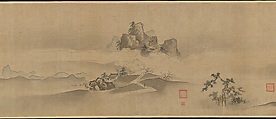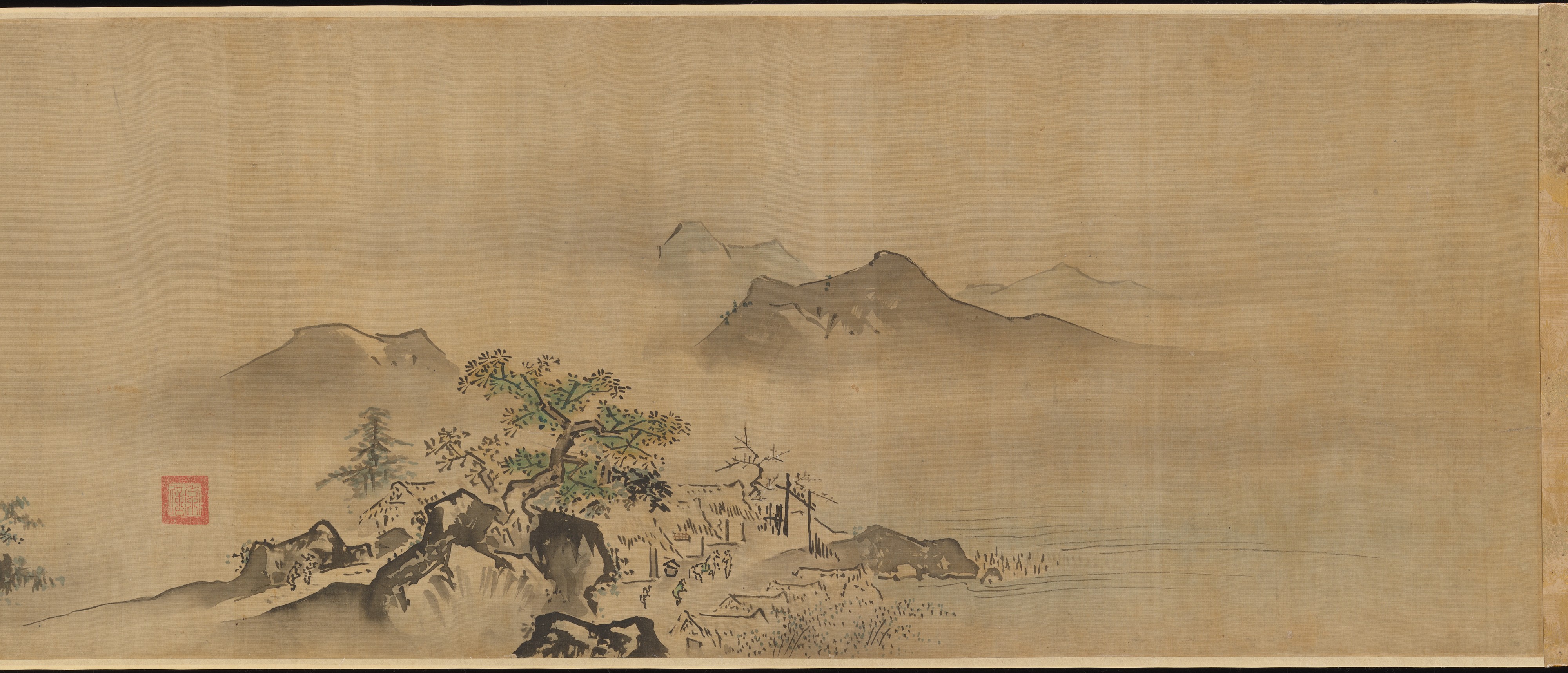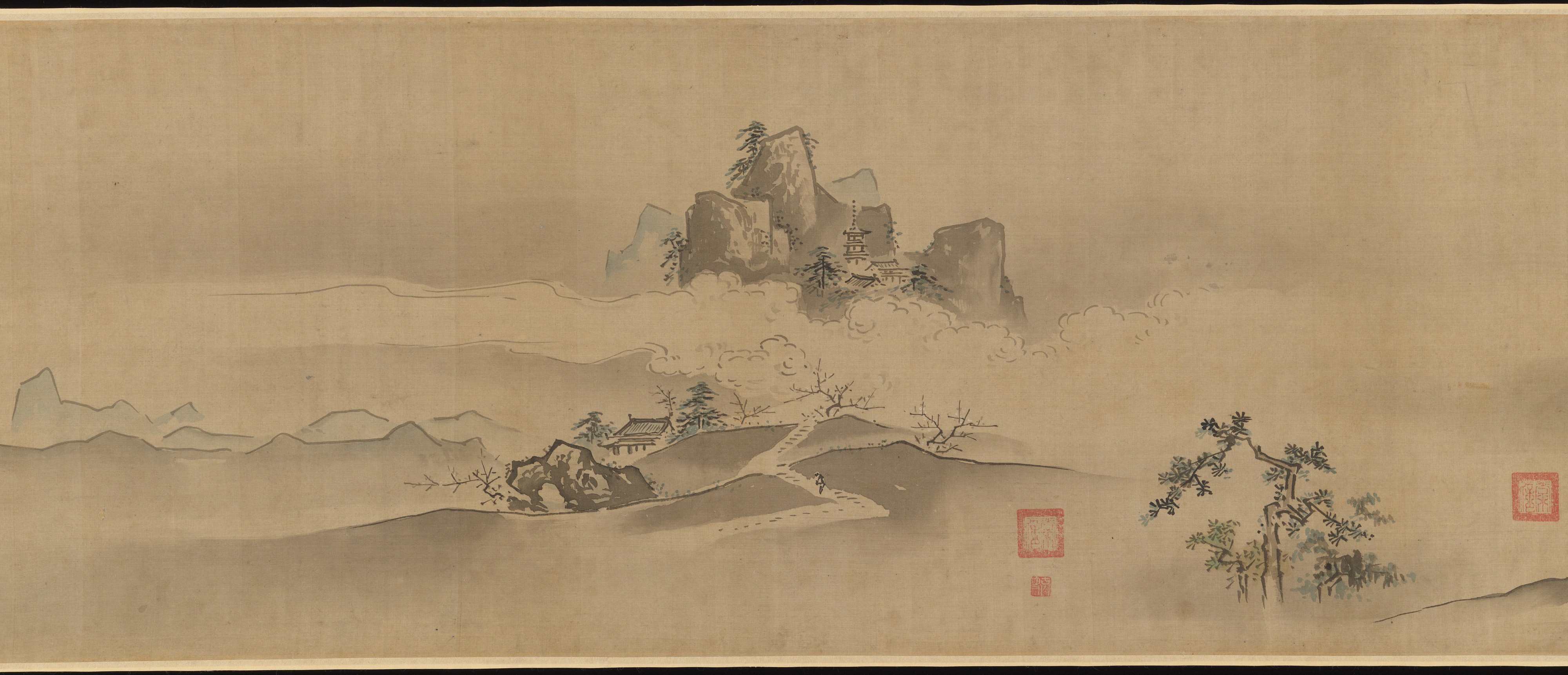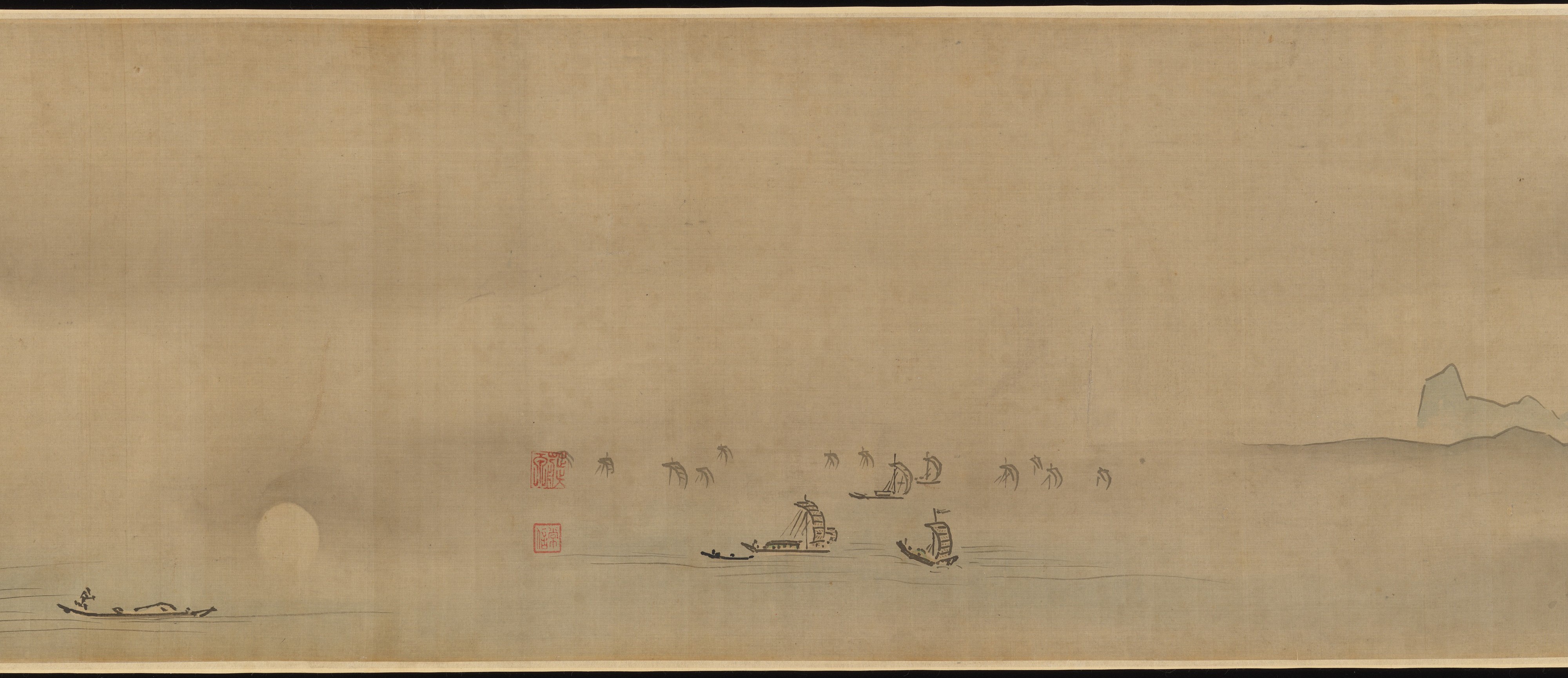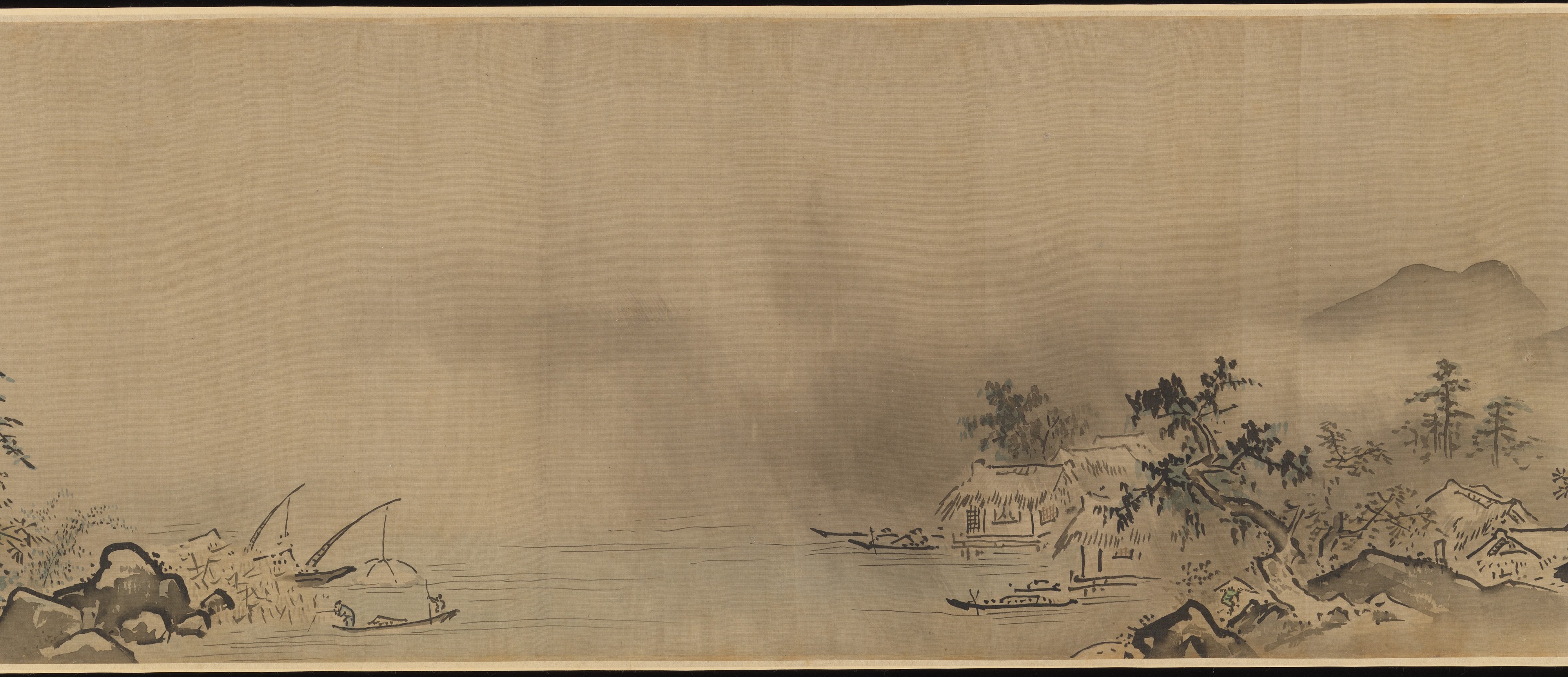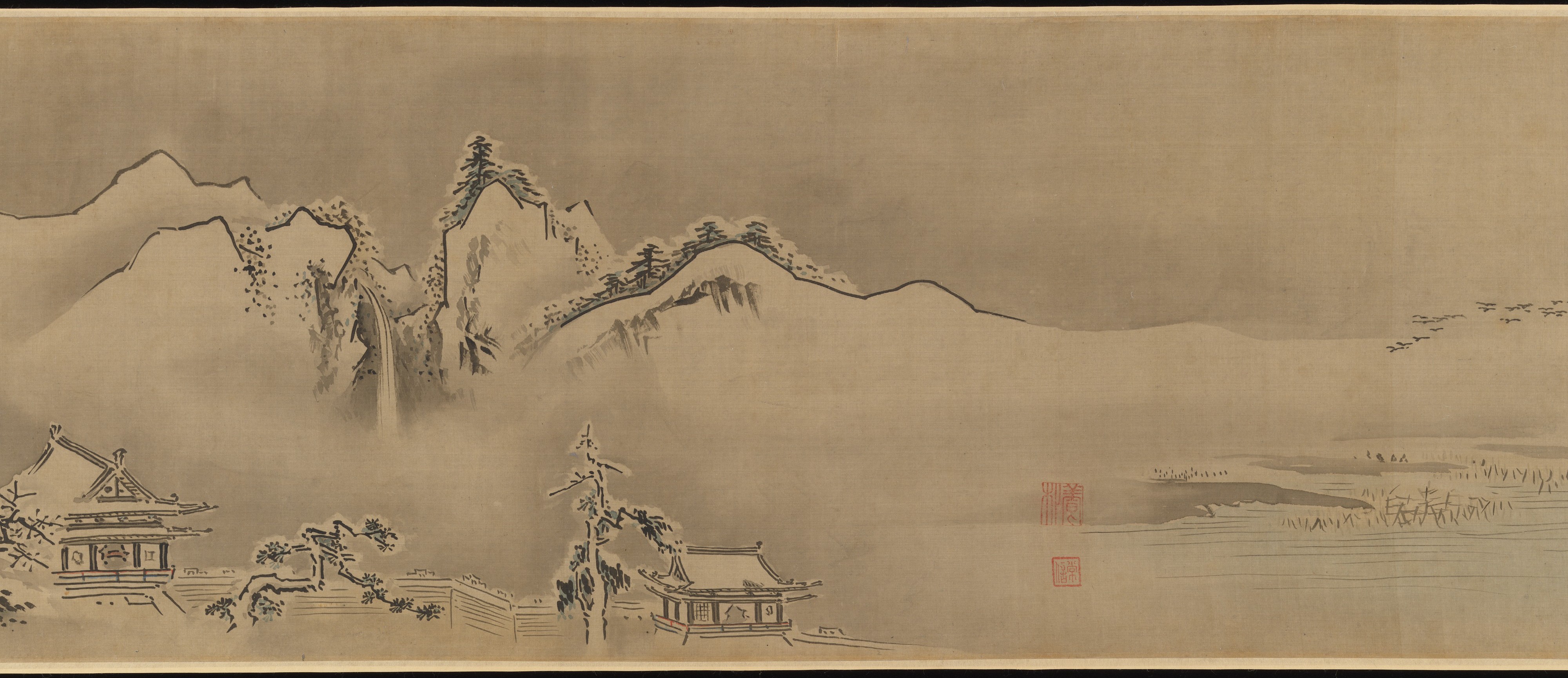Eight Views of the Xiao and Xiang Rivers
Kano Tsunenobu Japanese
Not on view
The theme of the Eight Views of the Xiao and Xiang Rivers, which celebrates the landscape of an area in southern China where two rivers converge, emerged in painting and poetry in eleventh-century China. Thirteenth-century monochrome ink paintings of the theme found their way into Japanese collections by the fourteenth century, and the theme remained a major painting subject in Japan for the next five hundred years. This take on the theme by Kano Tsunenobu, second-generation head of the Kobikichо̄ branch of the influential Kano house of painters, opens with a an early spring scene—“Mountain Market in Clearing Mist”—in which plum trees blossom beside the gate to a village. The scenes continue from right to left in seasonal order, "Evening Bell from a Mist-shrouded Temple," "Sails Returning from a Distant Shore," "Autumn Moon over Dongting Lake," "Night Rain over the Xiao and Xiang," "Evening Glow over a Fishing Village," and "Geese Alighting on a Sandy Shore." The scroll ends with a wintry scene, "River and Sky in Evening Snow," which shows pavilions and trees laden with snow in the garden of a luxurious countryside estate, and a view of a waterfall crashing amongst distant, snowcapped peaks.
Due to rights restrictions, this image cannot be enlarged, viewed at full screen, or downloaded.
This artwork is meant to be viewed from right to left. Scroll left to view more.
